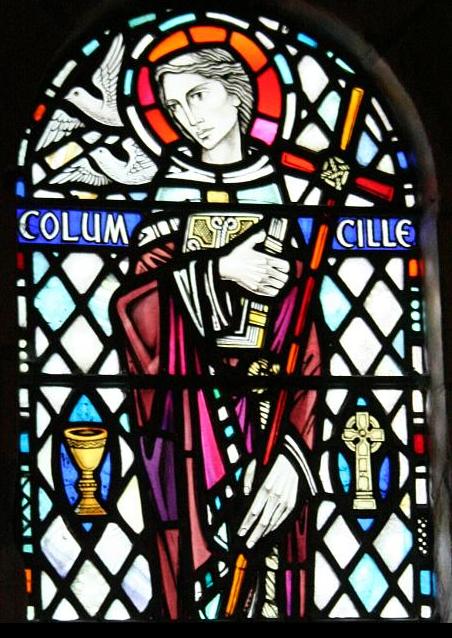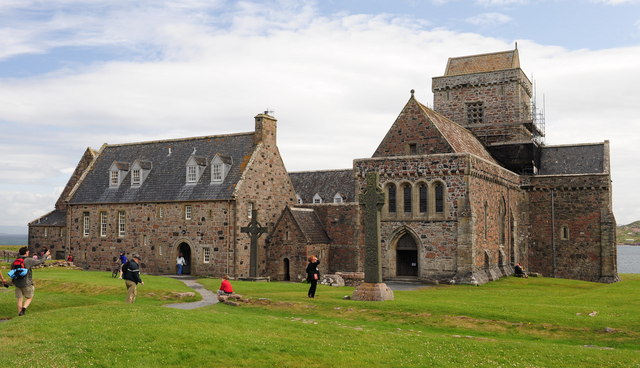|
Vita Columbae
The ''Life of Columba'' ( la, Vita Columbae) is a hagiography recounting the life of Columba, the founder of Iona Abbey, written a century after Columba's death by Adomnán, one of his successors as Abbot of Iona. Adomnán (also known as Eunan), served as the ninth Abbot of Iona until his death in 704. James Earle Fraser asserts that Adomnán drew extensively from an existing body of accounts regarding the life of Columba, including a Latin collection entitled "De uirtutibus sancti Columbae", composed c. 640 A.D. This earlier work is attributed to Cummene Find, who became the abbot of Iona and served as the leader of the monastic island community from 656 until his death in 668 or 669 A.D. While the ''Vita Columbae'' often conflicts with contemporaneous accounts of various battles, figures, and dates, it remains the most important surviving work from early medieval Scotland and provides a wealth of knowledge regarding the Picts and other ethnic and political groups from this time ... [...More Info...] [...Related Items...] OR: [Wikipedia] [Google] [Baidu] |
Hagiography
A hagiography (; ) is a biography of a saint or an ecclesiastical leader, as well as, by extension, an adulatory and idealized biography of a founder, saint, monk, nun or icon in any of the world's religions. Early Christian hagiographies might consist of a biography or ', a description of the saint's deeds or miracles (from Latin ''vita'', life, which begins the title of most medieval biographies), an account of the saint's martyrdom (called a ), or be a combination of these. Christian hagiographies focus on the lives, and notably the miracles, ascribed to men and women canonized by the Roman Catholic church, the Eastern Orthodox Church, the Oriental Orthodox churches, and the Church of the East. Other religious traditions such as Buddhism, Hinduism, Taoism, Islam, Sikhism and Jainism also create and maintain hagiographical texts (such as the Sikh Janamsakhis) concerning saints, gurus and other individuals believed to be imbued with sacred power. Hagiographic works, especi ... [...More Info...] [...Related Items...] OR: [Wikipedia] [Google] [Baidu] |
Columba
Columba or Colmcille; gd, Calum Cille; gv, Colum Keeilley; non, Kolban or at least partly reinterpreted as (7 December 521 – 9 June 597 AD) was an Irish abbot and missionary evangelist credited with spreading Christianity in what is today Scotland at the start of the Hiberno-Scottish mission. He founded the important abbey on Iona, which became a dominant religious and political institution in the region for centuries. He is the patron saint of Derry. He was highly regarded by both the Gaels of Dál Riata and the Picts, and is remembered today as a Catholic saint and one of the Twelve Apostles of Ireland. Columba studied under some of Ireland's most prominent church figures and founded several monasteries in the country. Around 563 AD he and his twelve companions crossed to Dunaverty near Southend, Argyll, in Kintyre before settling in Iona in Scotland, then part of the Ulster kingdom of Dál Riata, where they founded a new abbey as a base for spreading Celtic Christia ... [...More Info...] [...Related Items...] OR: [Wikipedia] [Google] [Baidu] |
Iona Abbey
Iona Abbey is an abbey located on the island of Iona, just off the Isle of Mull on the West Coast of Scotland. It is one of the oldest Christian religious centres in Western Europe. The abbey was a focal point for the spread of Christianity throughout Scotland and marks the foundation of a monastic community by St. Columba, when Iona was part of the Kingdom of Dál Riata. Saint Aidan served as a monk at Iona, before helping to reestablish Christianity in Northumberland, on the island of Lindisfarne. Iona Abbey is the spiritual home of the Iona Community, an ecumenical Christian religious order, whose headquarters are in Glasgow. The Abbey remains a popular site of Christian pilgrimage today. History Early history In 563, Columba came to Iona from Ireland with twelve companions, and founded a monastery. It developed as an influential centre for the spread of Christianity among the Picts and Scots. At this time the name of the island and so the abbey was "Hy" or "Hii"; ... [...More Info...] [...Related Items...] OR: [Wikipedia] [Google] [Baidu] |
Adomnán
Adomnán or Adamnán of Iona (, la, Adamnanus, Adomnanus; 624 – 704), also known as Eunan ( ; from ), was an abbot of Iona Abbey ( 679–704), hagiographer, statesman, canon jurist, and saint. He was the author of the ''Life of Columba'' ( la, Vita Columbae), probably written between 697 and 700. This biography is by far the most important surviving work written in early-medieval Scotland, and is a vital source for our knowledge of the Picts, and an insight into the life of Iona and the early-medieval Gaelic monk. Adomnán promulgated the Law of Adomnán or "Law of Innocents" ( la, Lex Innocentium). He also wrote the treatise ('On Holy Places'), an account of the great Christian holy places and centres of pilgrimage. Adomnán got much of his information from a Frankish bishop called Arculf, who had personally visited Egypt, Rome, Constantinople and the Holy Land, and visited Iona afterwards. Life Adomnán was born about 624, a relative on his father's side of C ... [...More Info...] [...Related Items...] OR: [Wikipedia] [Google] [Baidu] |
Saint Columba
Columba or Colmcille; gd, Calum Cille; gv, Colum Keeilley; non, Kolban or at least partly reinterpreted as (7 December 521 – 9 June 597 AD) was an Irish abbot and missionary evangelist credited with spreading Christianity in what is today Scotland at the start of the Hiberno-Scottish mission. He founded the important abbey on Iona, which became a dominant religious and political institution in the region for centuries. He is the patron saint of Derry. He was highly regarded by both the Gaels of Dál Riata and the Picts, and is remembered today as a Catholic saint and one of the Twelve Apostles of Ireland. Columba studied under some of Ireland's most prominent church figures and founded several monasteries in the country. Around 563 AD he and his twelve companions crossed to Dunaverty near Southend, Argyll, in Kintyre before settling in Iona in Scotland, then part of the Ulster kingdom of Dál Riata, where they founded a new abbey as a base for spreading Celtic Christianit ... [...More Info...] [...Related Items...] OR: [Wikipedia] [Google] [Baidu] |
Christian Hagiography
A hagiography (; ) is a biography of a saint or an ecclesiastical leader, as well as, by extension, an adulatory and idealized biography of a founder, saint, monk, nun or icon in any of the world's religions. Early Christian hagiographies might consist of a biography or ', a description of the saint's deeds or miracles (from Latin ''vita'', life, which begins the title of most medieval biographies), an account of the saint's martyrdom (called a ), or be a combination of these. Christian hagiographies focus on the lives, and notably the miracles, ascribed to men and women canonized by the Roman Catholic church, the Eastern Orthodox Church, the Oriental Orthodox churches, and the Church of the East. Other religious traditions such as Buddhism, Hinduism, Taoism, Islam, Sikhism and Jainism also create and maintain hagiographical texts (such as the Sikh Janamsakhis) concerning saints, gurus and other individuals believed to be imbued with sacred power. Hagiographic works, especiall ... [...More Info...] [...Related Items...] OR: [Wikipedia] [Google] [Baidu] |





